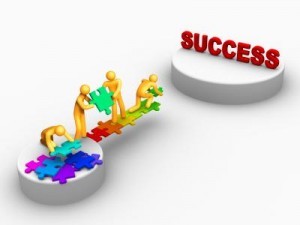 Sometimes a small business has to be careful what it wishes for. Say you’ve finally snagged a big customer with a huge contract. Great news, right? Not necessarily.
Sometimes a small business has to be careful what it wishes for. Say you’ve finally snagged a big customer with a huge contract. Great news, right? Not necessarily.
According to Les McKeown, president and CEO of Predictable Success, “Most small companies that land mega-contracts with massive companies end up badly damaged and have their growth stunted over the long term as a result.”
In this article, McKeown describes how this happens:
One client generates more than 20 percent of revenue. In McKeown’s view, “unhealthy things” begin to take place when one client reaches 20 percent or more of total revenues. No one client or customer should be allowed to “dominate the top line.”
Meetings are all about one customer. A red flag is raised when you realize nearly every meeting you hold focuses on the needs of that one client. These meetings turn into “little more than a punch-list of their outstanding production or delivery issues.”
Your employees are getting burned out. A single big customer can easily come to dominate the small business that’s serving it. When this occurs, the atmosphere grows tense because this is the one client you can’t afford to lose.
As McKeown notes, “Your employees lose the ability to work at their own pace, and are increasingly yanked from pillar to post.”
Deadlines go haywire, internal priorities are constantly shifted and superseded and workers are stretched to the limit. “Net result? You have an exhausted, unhappy, and increasingly disengaged workforce.”
Creative employees go unfulfilled. Sometime after the initial honeymoon period is over, a big client begins “turning up the volume when they think they’re not getting what they want.”
This tends to frustrate the most creative employees in your business, because their ideas and suggestions get drowned out in the frantic rush to meet the client’s constant demands. Without creative input, you run the risk of further failing to satisfy the client’s needs.
You lose focus on your target market. With all your efforts geared toward the one big client, you lack time and energy to stay on top of your target audience’s needs and challenges. When this happens, your competitors are only too eager to rush into the vacuum.
New client acquisition gets low priority. Along with a lack of focus on the target market, your small business simply lacks the resources to do what’s most important to long-term success. As McKeown says, “It dawns on you you’ve developed an in-built dependence on the contract that can’t easily be given up.”
The effort it takes to meet your big customer's needs become so “all-consuming” that new client acquisition efforts get placed on the back-burner.
No small business can afford to put all its eggs in one basket. Watch for these warning signs and keep working to expand your client base.
What do you do to avoid the big customer trap?
 The chairman and CEO of Loews Hotel spent a week working the front desk and carrying luggage for the reality show Down the Ladder. Jon Tisch’s eye-opening experience led to some significant changes in policy for the multimillion-dollar luxury hotel chain.
The chairman and CEO of Loews Hotel spent a week working the front desk and carrying luggage for the reality show Down the Ladder. Jon Tisch’s eye-opening experience led to some significant changes in policy for the multimillion-dollar luxury hotel chain.
By the end of the week, Tisch had a new awareness of and respect for the tough work his employees do every day. As reported by Sanyin Siang, executive director of the Coach K Center on Leadership and a contributor to the Huffington Post, “His employees now know and feel that [Tisch] gets it and that he gets them.”
In business as in life, it’s a great challenge for all of us to see things from someone else’s point of view, but for effective leadership, you need to understand how another person sees the world and lead from there.
When you walk in another person’s shoes, great things can happen.
You build trust. The connection between leader and followers grows stronger. “Leaders get a feel for the language and analogies that would resonate better with followers,” Siang notes.
You provide better feedback. When employees feel the CEO understands what they do, it’s easier for them to accept criticism that improves their performance. Also, there’s less of the kind of criticism that fails to account for the realities of an employee’s workload.
As Siang points out, “It’s much easier to criticize and point out the things that are wrong when there isn’t a full sense of the obstacles that might be in the way.”
You strengthen collaboration. Following the experience of walking in that other person’s shoes, there’s a much greater sense among both leader and employees that we’re all in this together. Because “leaders and followers can better see the contribution that each brings,” it’s possible to seize on opportunities “beyond each other’s limited understanding.”
Of course, most CEOs and business owners don’t have the time to literally assume the job duties of their employees, but there are ways that leaders can gain a deeper understanding of their employees’ perspectives and actions:
The best teachers ask questions, listen carefully to the answers and “then relay the lesson … in a way that is tailored to the students’ frame of reference.”
That’s what Jon Tisch has done. As Siang reports, his personal experience led to the creation of a new Loews Hotels policy. For one day every year, “his executives need to take on the jobs of their employees.”
How can you learn to walk in your employees’ shoes?
